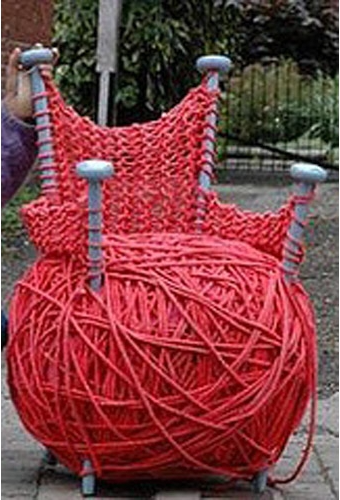Do you have a favorite chair? Have you ever thought that your chair preference is a reflection of your culture and a long history? Certainly I can’t imagine my life without chairs of some sort, especially since I spend most of my day perched on my HAG Capisco chair!
I’ve been curious about interesting chairs for some time, maybe because I’ve been on many a chair hunt for client project over the years. Ultimately a chair needs to be entirely suitable for the use it will be put to, but for the fun of collecting I’m intrigued by the human imagination reflected in chairs. I like imaginative things.
A lot of creative people have and continue to put energy into reinventing the chair. Something about it compels us; within one individualized piece of furniture, the chair really does completely embrace the design concepts of form and function.
Since before human history we’ve been sitting, squatting, straddling or perching in some fashion or other. Across history and cultures, ways of sitting have evolved differently (i.e. floor sitting versus chair sitting), with no one way being considered more or less sophisticated. (The anthropological study of sitting is a specialty unto itself.)
A look at the history of chairs, and why and how people have sat, provides a intriguing perspective into a microcosm of human sociology and history. We can posit that ancient humans sought out good spots to sit on. A rock, a stump, a berm. One of the best objects I ever sat on was a log lying alongside a burbling brook somewhere in an Aspen forest where my family used to picnic. A magical time with the seating perfectly provided by nature.
There is nothing obvious about needing a chair, per se. Why not a woven rug or furred-skin on the ground? Is a raised seat biomechanically easier than a full squat, or is it a solution to keep clean or stay off a cold, wet ground? There are certainly other solutions here: Koreans have traditionally sat on heated floors. Perhaps the seat of choice is intended to keep cool—a hammock, for example—and keep away from crawling things. Or a seat can show status. All of these are true for different peoples. Each is a form with function.
Scholarship shows that chairs as we know them are relatively recent modes of seating in annals of human existence. Ancient Sumerian cylinder seals depict rulers seated on a stool-type seat (ca. 2300 BC). Withold Rybczynski, the author of Now I Sit Me Down and Emeritus Professor of Architecture at the University of Pennsylvania, contends that perhaps the earliest evidence of the chair as we know it is from the Cycladic culture, which existed around 3200–2000 BC in the environs of what is now modern Greece.
The form of a chair reflects aspects of its culture. For example, a low-slung seat is characteristic of chairs used by ancient Egyptian women. Why were they low? Scholars speculate that the height of the seat may have indicated one’s place in a social hierarchy: the Pharohs of the same era are shown sitting on higher seats.
Which brings up thrones and ecclesiastical or ceremonial chairs, generally reserved for persons of importance. Whether a carved wood caryatid stool of the African Luba people,Tutankhamun’s resplendent golden throne, or more recent thrones of popes and kings, these chairs have special significance.
Portability is a key aspect of chair design through history. Many cultures have been nomadic or not settled in one geographic spot for any number of reasons, such as following food sources, traveling trade routes, wars and raids, etc. Purpose-built permanent furniture reflects human settlement and relative security and peace. Until the economic evolution of the middle class and the eventuality of mass production, chairs were relatively rare and generally the property of the well-off. Until people could settle in one place anything that couldn’t be packed up and moved easily was useless, and even a liability.
As for the ingenuity of portability, we might think of British campaign furniture—able to be knocked down, packed onto elephants and carried along on the campaigns of the British Raj— as unique inventions.
But, more than 2,000 years earlier Nordic peoples, ancient Greeks and Romans, and apparently the Japanese all had versions of the “X” folding-stool concept: a front and back hinged “X”s with a leather or woven seat slung across. One wonders who copied whom, or if these inventions arose independently across the world.
Even today we take these folding stools out to the park and on picnics. I won’t be so cavalier next time I have to sit on a camp stool. Think of all the history!

It is oddly amusing that these days we have gotten to the point of standing desks and encouraging free-ranging work styles to get us out of the habit of sitting for hours on end.
And yet, many of us will be perpetually on the hunt for the best of chairs—for the most comfortable, the most functional, the healthiest, the most beautiful and the “totally coolest.” So I’m going to slip out of my HAG office chair now and share with you a short slide collection of some of my favorite chairs:
Jacqueline Hosford, ASID, principal of Jacqueline Hosford Interior Design, loves working with clients to design their spaces for optimum function and each client's ultimate delight. Jacqueline is a professional member of the American Society of Interior Designers (ASID); is certified by the National Council for Interior Design Qualification; and is an adjunct professor of interior design, State University of New York (Purchase). Jacqueline is a graduate of Barnard College-Columbia University, and the New York School of Interior Design with highest honors. She can be reached at Jacqueline@jacquelinehosforddesign.com.




















